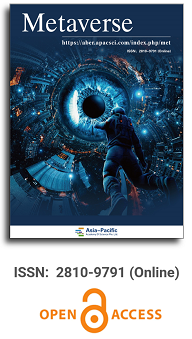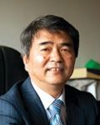
Asia Pacific Academy of Science Pte. Ltd. (APACSCI) specializes in international journal publishing. APACSCI adopts the open access publishing model and provides an important communication bridge for academic groups whose interest fields include engineering, technology, medicine, computer, mathematics, agriculture and forestry, and environment.



Generative AI tools in art education: Exploring prompt engineering and iterative processes for enhanced creativity
Vol 4, Issue 1, 2023
Download PDF
Abstract
The rapid development and adoption of generative artificial intelligence (AI) tools in the art and design education landscape have introduced both opportunities and challenges. This timely study addresses the need to effectively integrate these tools into the classroom while considering ethical implications and the importance of prompt engineering. By examining the iterative process of refining original ideas through multiple iterations, verbal expansion, and the use of OpenAI’s DALL-E2 for generating diverse visual outcomes, researchers gain insights into the potential benefits and pitfalls of these tools in an educational context. Students in the digital at case study were taught prompt engineering techniques and were tasked with crafting multiple prompts, focusing on refining their ideas over time. Participants demonstrated an increased understanding of the potential and limitations of generative AI tools and how to manipulate subject matter for more effective results. The iterative process encouraged students to explore and experiment with their creative ideas, leading to a deeper understanding of the possibilities offered by AI tools. Despite acknowledging the ethical concerns regarding copyright and the potential replacement of artists, students appreciated the value of generative AI tools for enhancing their sketchbooks and ideation process. Through prompt engineering and iterative processes, students developed a more detail-oriented approach to their work. The challenge of using AI-generated images as final products was conceptually intriguing, requiring further investigation and consideration of the prompts. This study highlights the potential benefits and challenges of integrating generative AI tools into art and design classrooms, emphasizing the importance of prompt engineering, iterative processes, and ethical considerations as these technologies continue to evolve.
Keywords
References
- DelSignore P. The new age of creative AI began in 2022 [Internet]. 2022 [updated 2022 Dec 24; cited 2023 Apr 6]. Available from: https://medium.com/predict/the-new-age-of-creative-ai-began-in-2022-ece07bb93350.
- Ansari T. How AI transformed the art world in 2022 [Internet]. 2022 [update 2022 Oct 30; cited 2023 Apr 8]. Available from: https://analyticsindiamag.com/how-ai-transformed-the-art-world-in-2022/.
- Murphy BP. Is lensa AI stealing from human art? An Expert Explains the Controversy [Internet]. 2022 [update 2022 Dec 15; cited 2023 Apr 8]. Available from: https://www-sciencealert-com.cdn.ampproject.org/c/s/www.sciencealert.com/is-lensa-ai-stealing-from-human-art-an-expert-explains-the-controversy/amp.
- Hazucha B. Artificial intelligence and cultural production: Possible impacts on Creativity and Copyright Law [Internet]. 2022 [update 2022 Feb 6; cited 2023 Apr 6]. Available from: https://ssrn.com/abstract=4028106.
- Francke E, Bennett A. The potential influence of artificial intelligence on plagiarism: A higher education perspective. In: Griffiths P, Kabir MN (editors). European Conference on the Impact of Artificial Intelligence and Robotics (ECIAIR 2019); 2019 Oct 31–Nov 1; Oxford. New York: Academic Conferences and Publishing International Ltd.; 2019. p. 131–140.
- Sherry B. 3 Limits to artificial intelligence’s creativity (and how to solve them): Here’s what you need to know about harnessing A.I. technology to be more creative [Internet]. 2022 [update 2022 Dec 16; cited 2023 Apr 7]. Available from: https://www.inc.com/ben-sherry/3-limits-to-artificial-intelligences-creativity-and-how-to-solve-them.html.
- Ajani G. Human authorship and art created by artificial intelligence—Where do we stand? In: Dreier T, Andina T (editors). Digital ethics. Baden-Baden: Nomos Verlagsgesellschaft mbH & Co. KG.; 2022. p. 253–270. doi: 10.5040/9781509964154.ch-015.
- Rosenberg H. The de-definition of art. Chicago, USA: University of Chicago Press; 1983.
- Mullholland N. 2. definitions of art and the art world. In: Exploring visual culture: Definitions, concepts, contexts. Edinburgh, USA: Edinburgh University Press; 2005. p. 18–33. doi: 10.1515/9781474471879-006.
- Zhang C, Lu Y. Study on artificial intelligence: The state of the art and future prospects. Journal of Industrial Information Integration 2021; 23: 100224. doi: 10.1016/j.jii.2021.100224.
- Wellner G. Digital imagination, fantasy, AI art. Foundations of Science 2022; 27: 1445–1451. doi: 10.1007/s10699-020-09747-0.
- Slotte Dufva T. Entanglements in AI art. In: Global media arts education: Mapping global perspectives of media arts in education. Cham: Springer International Publishing; 2022. p. 181–196.
- Compton N. Generative art: The creatives powering the AI art boom [Internet]. Wallpaper: Future Publishing Limited Quay House; 2022 [cited 2023 Apr 6]. Available from: https://www.wallpaper.com/art/generative-art.
- Coeckelbergh M. Can machines create art? Philosophy & Technology 2017; 30(3): 285–303. doi: 10.1007/s13347-016-0231-5.
- Mazzone M, Elgammal A. Art, creativity, and the potential of artificial intelligence. Arts 2019; 8(1): 26. doi: 10.3390/arts8010026.
- Tao F. A new harmonisation of art and technology: Philosophic interpretations of artificial intelligence art. Critical Arts 2022; 36(1–2): 110–125. doi: 10.1080/02560046.2022.2112725.
- Ahmed D. Senses, experiences, emotions, memories: Artificial intelligence as a design instead of for a design in contemporary Japan. Intelligent Buildings International 2022; 14(2): 133–150. doi: 10.1080/17508975.2020.1764327.
- Csikszentmihalyi M. Society, culture and person: A system view of creativity. In: Sternberg RJ, Davisdon JE (editors). The nature of creativity. New York: Cambridge University Press; 1988. p. 325–329.
- Csikszentmihalyi M. Society, culture, and person: A systems view of creativity. In: Sternberg RJ, Davisdon JE (editors). Heidelberg: Springer Netherlands; 2014. p. 47–61.
- Jennings KE. Developing creativity: Artificial barriers in artificial intelligence. Minds and Machines 2010; 20: 489–501. doi: 10.1007/s11023-010-9206-y.
- Hughes RT, Zhu L, Bednarz T. Generative adversarial networks–enabled human–artificial intelligence collaborative applications for creative and design industries: A systematic review of current approaches and trends. Frontiers in Artificial Intelligence 2021; 4: 604234. doi: 10.3389/frai.2021.604234.
- Xu B, Jiang J. Exploitation for multimedia Asian information processing and artificial intelligence-based art design and teaching in colleges. ACM Transactions on Asian and Low-Resource Language Information Processing 2022; 21(6): 1–18. doi: 10.1145/3526219.
- Li J, Zhang B. The application of artificial intelligence technology in art teaching taking architectural painting as an example. Computational Intelligence and Neuroscience 2022; 2022; 8803957. doi: 10.1155/2022/8803957.
- Zhang W, Shankar A, Antonidoss A. Modern art education and teaching based on artificial intelligence. Journal of Interconnection Networks 2022; 22(Supp01): 2141005. doi: 10.1142/S021926592141005X.
- Mok K. The power and ethical dilemma of AI image generation models [Internet]. Portland, Oregon: The New Stack; 2023 [update 2023 Jan 6; cited 2023 Apr 6]. Available from: https://thenewstack.io/the-power-and-ethical-dilemma-of-ai-image-generation-models.
Supporting Agencies
Copyright (c) 2023 James Hutson, Peter Cotroneo

This work is licensed under a Creative Commons Attribution 4.0 International License.

This site is licensed under a Creative Commons Attribution 4.0 International License (CC BY 4.0).

Prof. Zhigeng Pan
Professor, Hangzhou International Innovation Institute (H3I), Beihang University, China

Prof. Jianrong Tan
Academician, Chinese Academy of Engineering, China
Conference Time
December 15-18, 2025
Conference Venue
Hong Kong Convention and Exhibition Center (HKCEC)
...
Metaverse Scientist Forum No.3 was successfully held on April 22, 2025, from 19:00 to 20:30 (Beijing Time)...
We received the Scopus notification on April 19th, confirming that the journal has been successfully indexed by Scopus...
We are pleased to announce that we have updated the requirements for manuscript figures in the submission guidelines. Manuscripts submitted after April 15, 2025 are required to strictly adhere to the change. These updates are aimed at ensuring the highest quality of visual content in our publications and enhancing the overall readability and impact of your research. For more details, please find it in sumissions...






.jpg)
.jpg)

